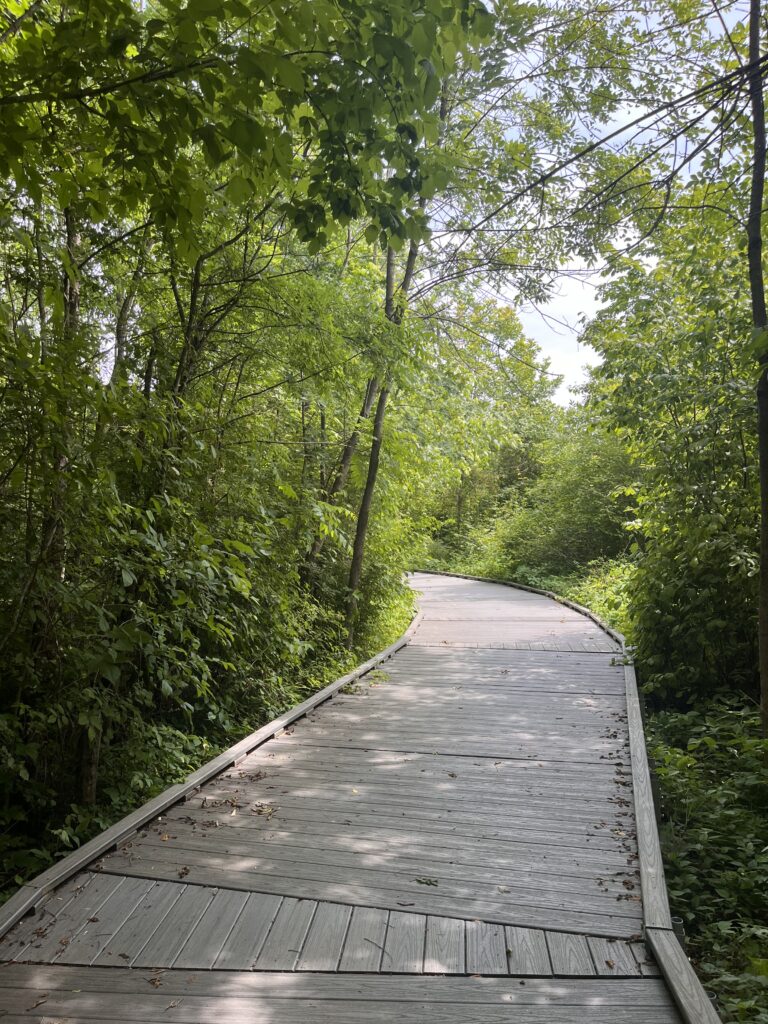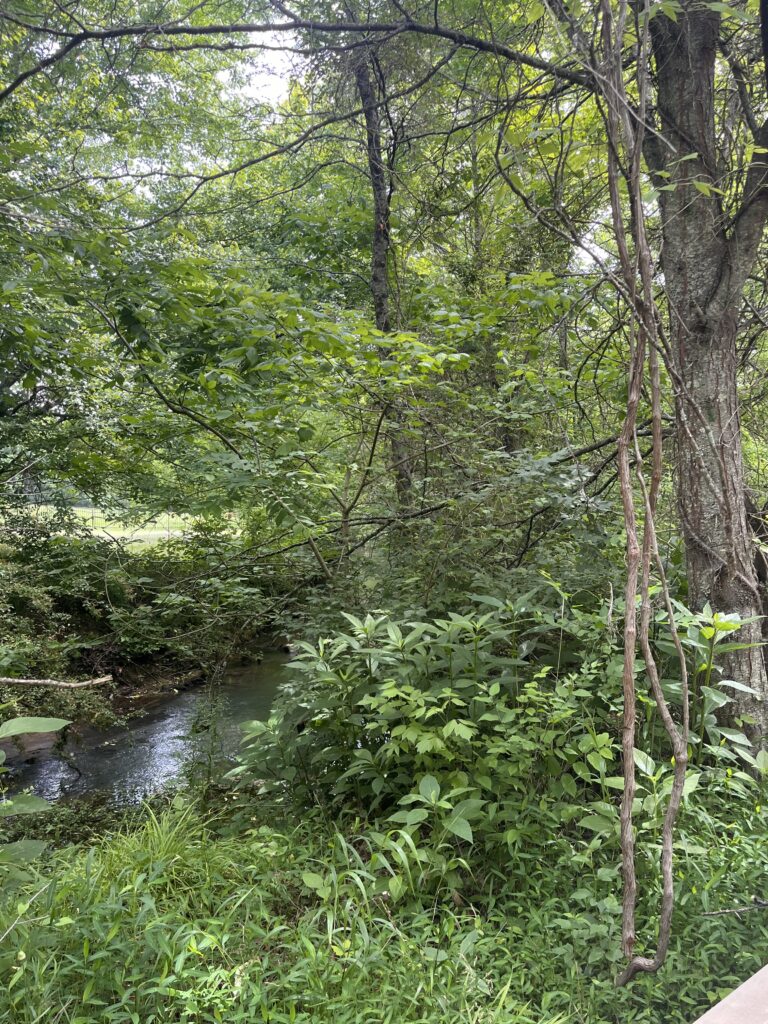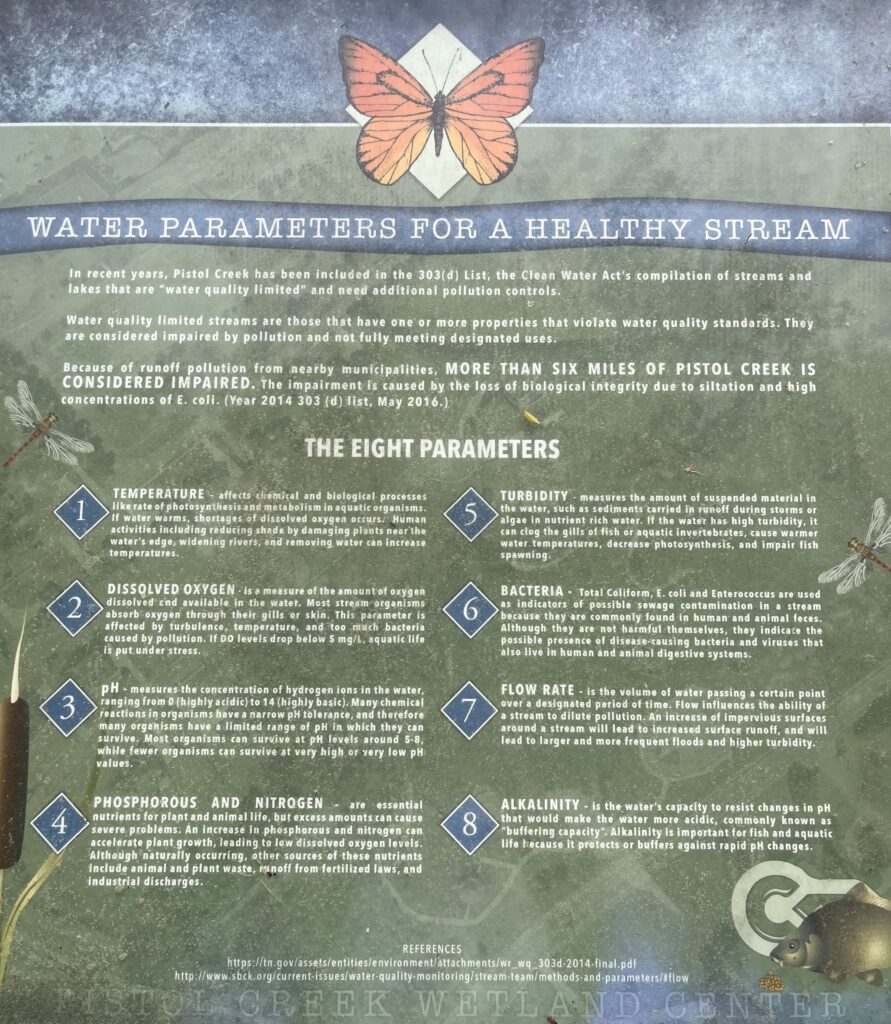Freedom to Roam: Pistol Creek Wetland Center
Living an active lifestyle may sound daunting, but getting outside doesn’t have to be intimidating. Maryville and the surrounding areas offer many accessible outdoor spaces, such as Pistol Creek Wetland Center, that provide an opportunity for an immersive nature experience as well as access to educational resources that raise awareness about the functions of these nature features.
When the plan for a wetland area was developed by the City of Maryville with support from the Environmental Protection Agency (EPA) in the late 1990s, Maryville College’s campus community knew they wanted to be involved. Students assisted in the identification of native species and monitoring the biological functions of the center under the leadership of professors Cash and O’Gorman and with continued involvement from Dr. Unger, proof of MC’s commitment to community involvement and conservation that has been supported by their partnership with Mountain Challenge.
The wetland center, which is only a six-minute drive from Maryville College’s campus, offers both recreational and practical appeal. Wetlands provide more than just a rich environment for many species of birds, reptiles, and insects; they serve an important role in preventing water pollution and conserving waterways. The thickness of vegetation and sediment in wetland areas allows them to trap and absorb pollutants that would otherwise travel down the waterway and eventually into the water we drink, meaning they essentially function as a natural sponge.
Visiting Pistol Creek Wetland Center in both the Fall and the Spring gave me the opportunity to see the changes to the environment that are caused by seasonal shifts. For example, the water table that serves to keep the wetlands wet and recirculates the filtered water retreats deeper under the surface of the bog in warmer months, rising as temperatures cool. Observing the variation of the landscape that occurs in just a few months gave me an appreciation for the regenerative and evolving nature of, well, nature.
Something that didn’t change, however, was how few other people I saw on both visits. The parking lot was completely empty both times, in fact. This doesn’t make any sense to me; why is such a beautiful, accessible, and fun place so empty? Located in the heart of a neighborhood community, you would think that the wetland center would be an epicenter of community centered around nature.
Instead it is an oasis that seems to be a well-kept secret. We can change this, though, by prioritizing spending time in spaces like this at times when you may instead have been sitting inside, walking on a treadmill, or any other mindless activity that could be improved by being outside (and I would argue that almost all activities can be).
Seeing areas like this for ourselves– witnessing litter trapped in the root mats of sprawling trees, viewing the rampant wildlife and the proliferating growth of native plants– allows us to tangibly understand the impacts of our daily activities on local ecosystems. The simplicity of a wetland thicket juxtaposed with the vast environmental impacts that it enacts puts our capability for environmental improvement into perspective.
Small changes can truly lead to long-lasting positive growth toward sustainability, like minimizing our contributions to waterway pollution by watching for oil and fluid leaks in our vehicles, composting yard waste rather than letting it accumulate in ditches and drains, washing vehicles on lawns rather than driveways where the cleaning products can wash into storm drains, and collecting rainwater to reuse rather than letting downspouts run into drains.
Simply going for a leisurely stroll through the wetland center yourself is also an easy way to support environmental initiatives in the area; by participating we encourage our local governments to implement more nature conservation in their policymaking, and the informational stations at various points throughout the trail make waterway education fun and easy for all ages.
Getting outside doesn’t have to look like a backpacking trip that takes weeks of planning, sometimes it’s as simple as a spontaneous trip to see one of the most biologically dense areas of our ecosystem and appreciate its ecological capabilities firsthand.
For more information about Pistol Creek Wetland Center, visit https://www.maryvillegov.com/pistol-creek-wetland-center.html.



